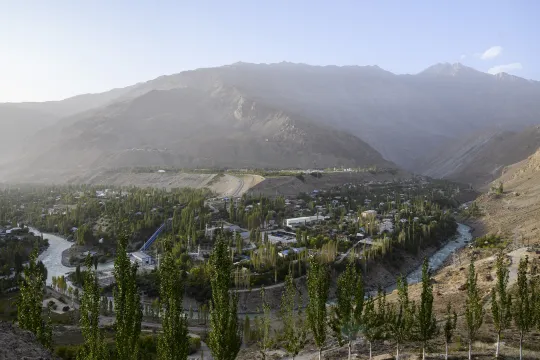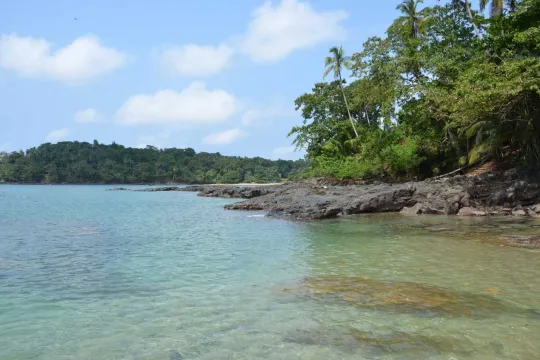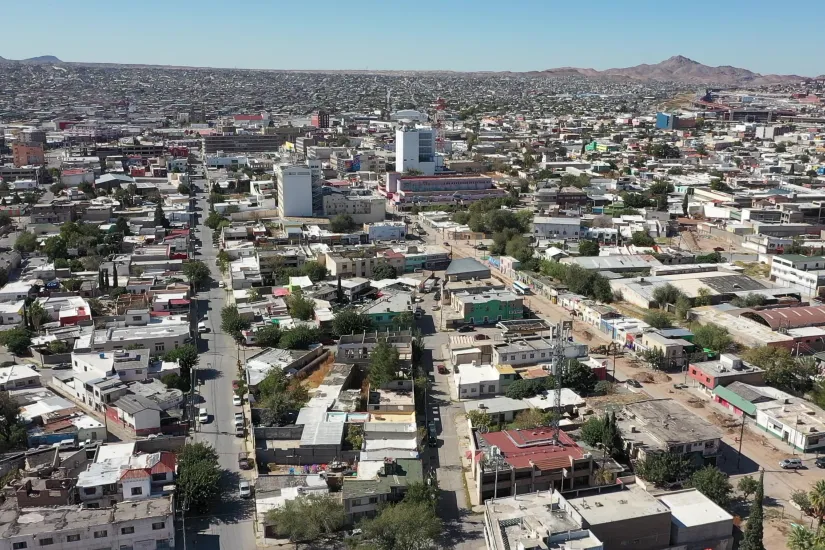
City - Aerial - Ciudad Juarez
Introduction
In April 2022, the Municipality of Ciudad Juarez decided to catalyse and encourage daily action within the urban context. Collaborating with UN-Habitat, the Municipality of Ciudad Juarez aims to focus on citizen engagement and long term planning, by aligning with and guiding the implementation of the Sustainable Development Goals of the 2030 agenda and the New Urban Agenda in the municipality by 2040. This collaboration presents a chance to enhance local planning instruments in alignment with the sustainable development principles in global agendas.
The project, Ciudad Juarez 2040, is a collective endeavour that will allow to shape a prosperous and collective future for the municipality. It is a collective effort of local government, academia, civil associations and citizens in general to integrate a strategic piece that guides public policy and collective action for the long-term development of the city. Participation fosters legitimacy, it ensures to implement this strategy as both a guide for short term action, and for ensuring a legacy for generations to come in Juarez.
The vision for this project encompasses infrastructure, prosperity, hope, environmental resilience, and most crucially, social transformation. In addition, it features four supplementary components that will steer the future development of Ciudad Juarez to lead it to its envisioned future: The Ciudad Juarez 2040 Vision, a Strategic Project Portfolio, a Municipal Public Space Strategy and a Tactical Urbanism Master Plan.
Context and background
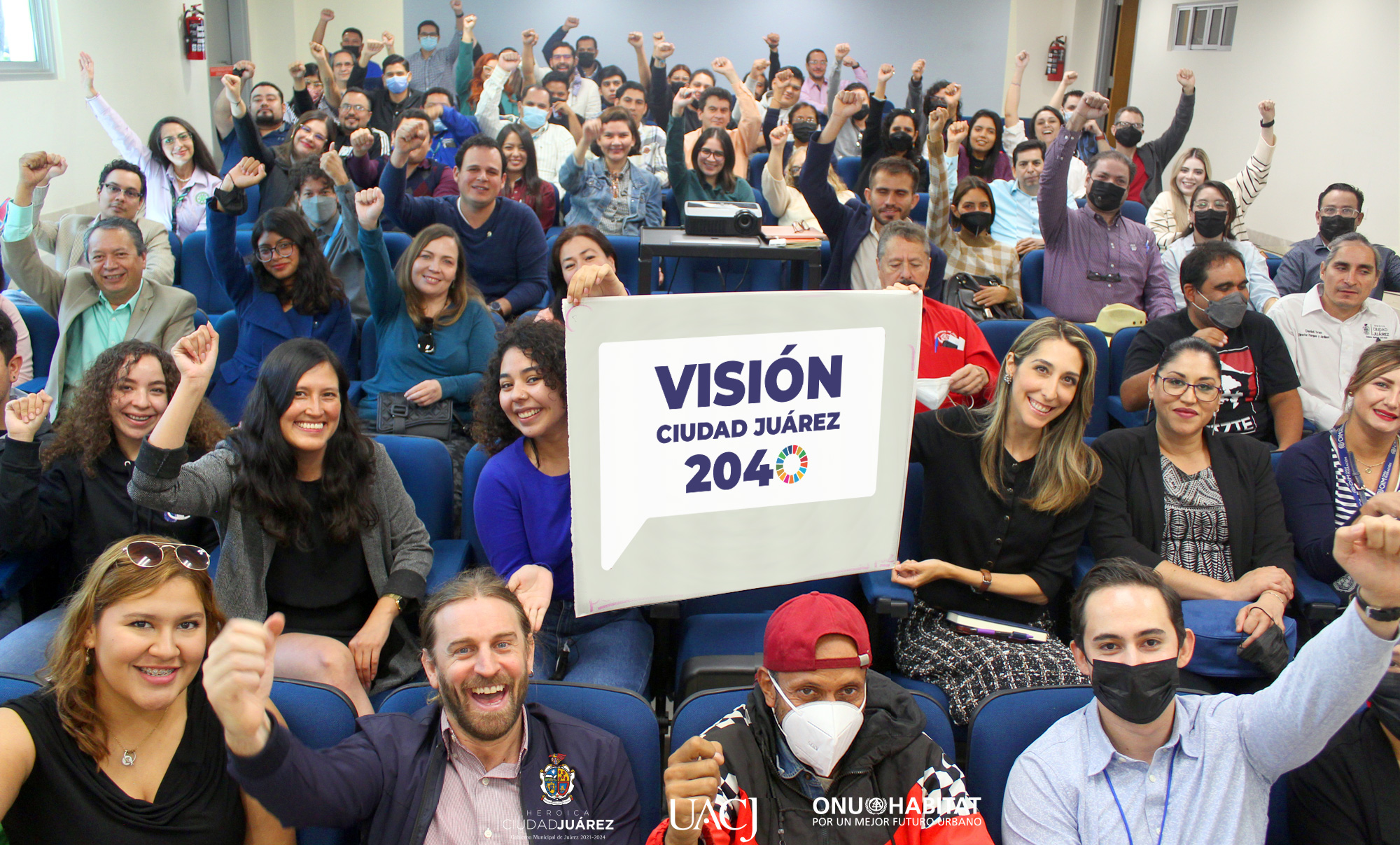
Ciudad Juarez, situated in the northern border region of Mexico, has a population of approximately 1.5 million residents. It lies adjacent to El Paso, Texas - United States, and forms a vital part of the binational Paso del Norte Metropolitan Area. Due to its distinctive urban dynamics characterized by significant cross-border commuting, some of the challenges that it faces include managing rapid growth, ensuring quality public spaces, and adapting to an evolving industrial landscape. The municipality also serves as a pivotal economic hub with an expanding focus on commerce and services. This urban landscape provides a unique backdrop for exploring innovative approaches to sustainable development and community engagement.
In order to develop the 2040 Vision for Ciudad Juarez, a series of inclusive activities were organised to gain insights for the situational analysis. UN-Habitat lays the groundwork for authentic citizen participation, influencing both urban planning and governance mechanisms to realise the Sustainable Development Goals at the local level. Through an extensive multi-sectoral participatory process, the journey commenced with a meticulous examination of current regulations and in-depth situational analysis along with an analysis of pertinent statistical data. Subsequently, a participatory approach was implemented to gauge citizens’ perspectives on the city’s challenges, based on public interest. The project took form through a face-to-face workshop, offering vital inputs for the development of a strategic framework composed of five objectives, 16 goals, and 66 measurable actions spanning short, medium and long-term. Ultimately, a guide was developed for decision makers within the municipal administration and other stakeholders involved in urban governance.
Plan and process

Inclusive urban planning was facilitated by promoting participatory processes that centre on recognizing and delineating the specific requirements of priority groups. The urban planning process consisted of three stages: 1) Analysis and diagnosis, 2) City envisioning, and 3) Operationalization and execution of the vision and guidelines. In the first phase, the emphasis was on understanding the city’s context, involving spatial analysis, municipal assessment, participatory workshops with residents, priority identification, and sharing and presenting the diagnostic findings. The second phase concentrated on developing the city’s image and vision, with a series of workshops and participatory endeavours instrumental in delineating objectives, targets, and strategic actions. The third phase focused on identifying strategic projects and prioritising them through participatory means, and secondly, outlining and designing specific tactical urban interventions, along with formulating a plan for their implementation engaging the local residents through the process.
Use of Our City Plans
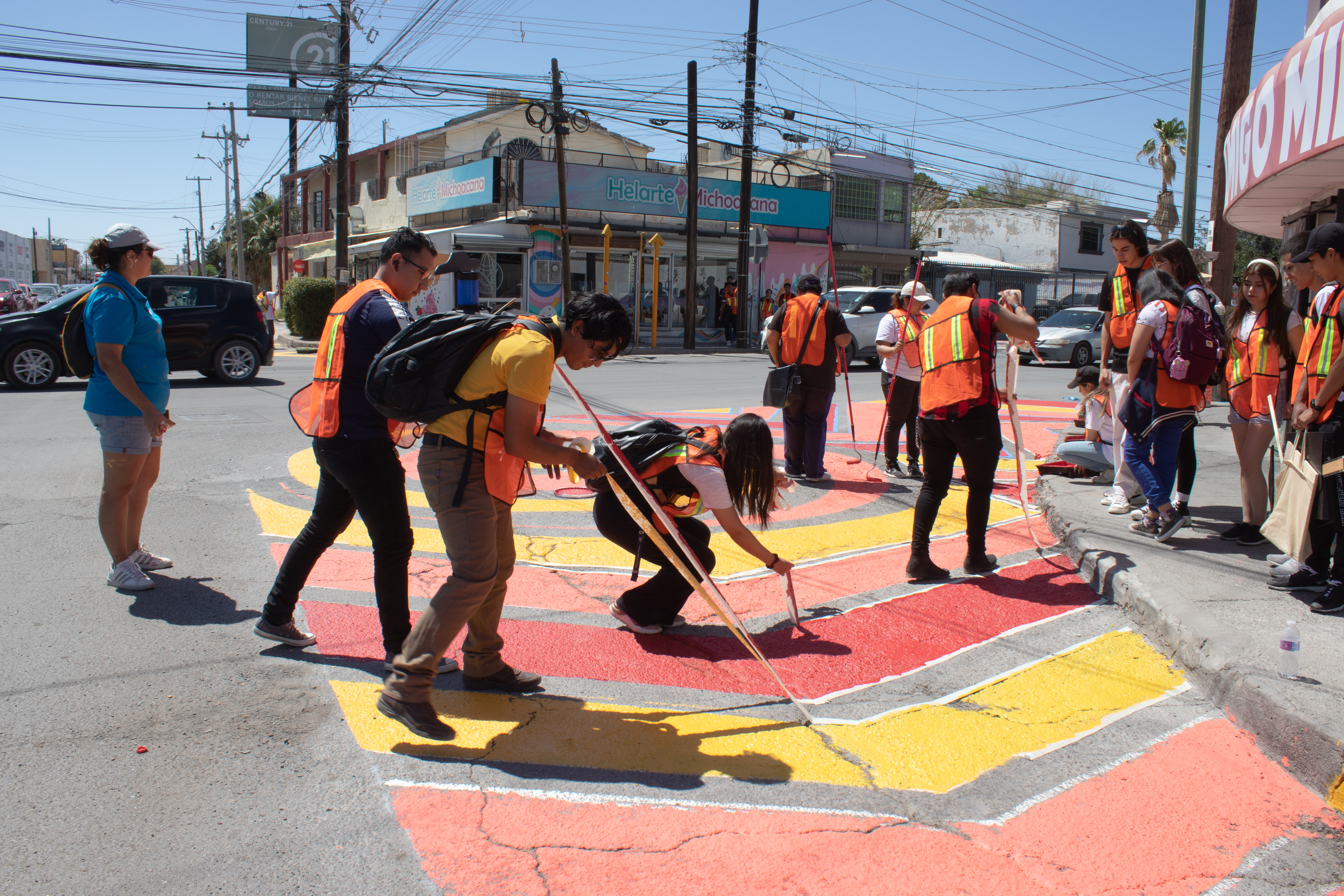
Our City Plans methodology supported the citizen participation activities and different planning procceses of the Ciudad Juarez project. The objective was to strengthen urban planning from a sustainability approach, through a strategic vision plan for the future and previous planning experiences.
The process involved distinct phases to arrive at its conclusions. First, there was a transition from field research to documentary analysis, supplemented by in-person workshops, forums, collaborative mapping and online surveys. Following this, the results were carried out and concluded with the final diagnosis and validation of the conclusions. The Ciudad Juarez 2040 vision was carried out by recovering the learning obtained from the situational diagnosis, as well as from the participatory and field processes. Through collaborative efforts, a collective vision was forged, providing the foundation for subsequent articulation of objectives, strategic actions and monitoring indicators, elements that guided the elaboration of the programming and prioritization of the project portfolio and the elaboration of action plans and recommendations, also achieved through participatory activities and technical workshops. The strategy and its components thus becomes a layer of operation in the territory of Ciudad Juarez, which together will allow the Vision to be achieved.
Results
Ciudad Juarez 2040 City Vision resulted in four planning documents between September 2022 and May 2023 through nearly 15 participatory activities: the long-term city vision, the portfolio of strategic projects, the municipal public space strategy and the master plan for tactical urbanism interventions.
These documents are closely interlinked, and their collaborative institutional efforts stood out for upholding an extensive participatory approach. They will serve as instrumental tools, operating at various levels to bring the citizens’ envisioned future for their municipality, into reality.
